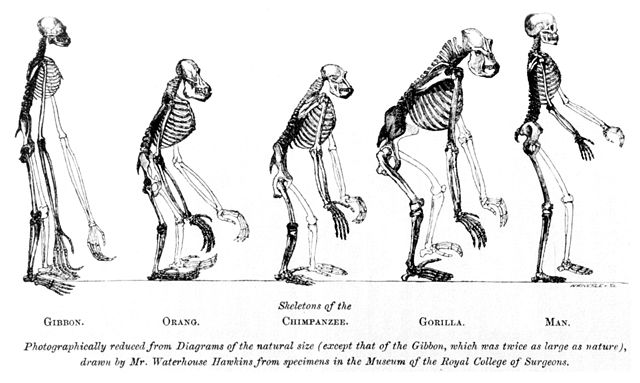The history of anthropometry includes its use as an early tool of anthropology, use for identification, use for the purposes of understanding human physical variation in paleoanthropology and in various attempts to correlate physical with racial and psychological traits. At various points in history, certain anthropometrics have been cited by advocates of discrimination and eugenics often as part of novel social movements or based upon pseudoscience.
Pithecometra: In the frontispiece from his 1863 Evidence as to Man's Place in Nature, Thomas Huxley compared skeletons of apes to humans.
A head-measuring tool designed for anthropological research in the early 1910s. Theodor Kocher was inventor of the craniometer.
Illustration from "The Speaking Portrait" (Pearson's Magazine, Vol XI, January to June 1901) demonstrating the principles of Bertillon's anthropometry
A Bertillon record for Francis Galton, from a visit to Bertillon's laboratory in 1893
Pierre Paul Broca was a French physician, anatomist and anthropologist. He is best known for his research on Broca's area, a region of the frontal lobe that is named after him. Broca's area is involved with language. His work revealed that the brains of patients with aphasia contained lesions in a particular part of the cortex, in the left frontal region. This was the first anatomical proof of localization of brain function.
Pierre Paul Broca
Head of a rachitic child in the New York Infant Asylum (1895)
Louis Victor "Tan" Lebourgne's brain (by Pierre Marie)







